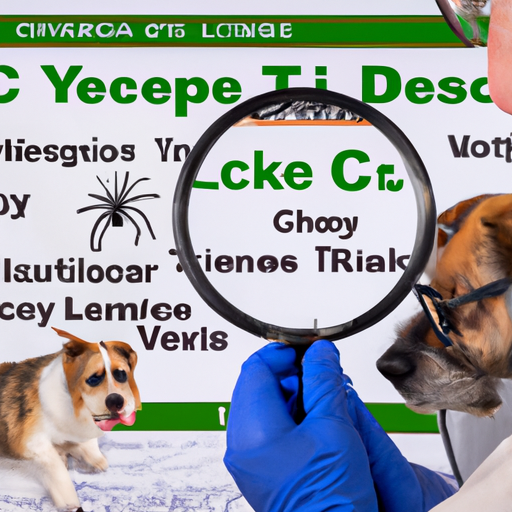Understanding the Threat of Lyme Disease
As a caregiver, your primary concern is the well-being of those in your care – and that includes your four-legged family members. Lyme disease, a bacterial infection transmitted by ticks, poses a significant risk to dogs. This disease can result in joint pain, fever, lethargy, and other serious complications. The first step in managing this threat is understanding how to test for Lyme disease in dogs.
Recognizing the Symptoms of Lyme Disease in Dogs
Before even considering testing, you need to be able to recognize the symptoms of Lyme disease. These can be subtle and easy to miss, especially in the disease’s early stages. Here are some of the most common symptoms to look out for:
- Sudden and unexplained limping, often accompanied by joint swelling
- Fever and loss of appetite
- Lethargy or depression
- Less common symptoms include heart abnormalities and nervous system complications
If your dog is exhibiting any of these symptoms, it’s time to consider testing for Lyme disease.
Methods of Testing for Lyme Disease in Dogs
When it comes to testing for Lyme disease, there are a few different methods available. Here’s a table that breaks down the most common ones:
| Method | Description |
|---|---|
| Serology | This blood test checks for antibodies to the Lyme bacteria. However, it can take 4-6 weeks after infection for these antibodies to appear. |
| PCR | The Polymerase Chain Reaction (PCR) test can detect the bacteria’s DNA in your dog’s blood, urine, or tissue samples. |
| Urinalysis | Though not a definitive test, urinalysis can provide additional information, particularly if your dog is showing symptoms of kidney disease. |
Next Steps After a Positive Lyme Disease Test
If your dog tests positive for Lyme disease, don’t panic. While Lyme disease is serious, it’s also treatable, especially when caught early. Your vet will typically prescribe a course of antibiotics, usually doxycycline. It’s critical to follow your vet’s instructions closely and ensure your dog completes the full course of antibiotics, even if they seem to be feeling better.
Preventing Lyme Disease in Dogs
Prevention is always better than cure. Here are some steps you can take to protect your dog from Lyme disease:
- Regularly check your dog for ticks, especially after walks in wooded or grassy areas
- Use tick prevention products, such as collars, sprays, or spot-on treatments
- Keep your yard tick-free by regularly mowing your lawn and removing leaf litter
- Consider getting your dog vaccinated against Lyme disease, especially if you live in a high-risk area
FAQ
Q: Can humans get Lyme disease from dogs?
A: No, humans cannot directly get Lyme disease from dogs. However, if a tick falls off an infected dog and then bites a human, the human can become infected.
Q: How long does it take for a tick to transmit Lyme disease to a dog?
A: It typically takes 48 hours of attachment for a tick to transmit Lyme disease to a dog.
Q: Are some dog breeds more susceptible to Lyme disease than others?
A: No dog breed is immune to Lyme disease, but some may be more susceptible based on their lifestyle and environment, not their breed.
Q: Can Lyme disease in dogs be cured?
A: Yes, Lyme disease in dogs can usually be treated successfully with antibiotics. However, prevention is always the best defense.



